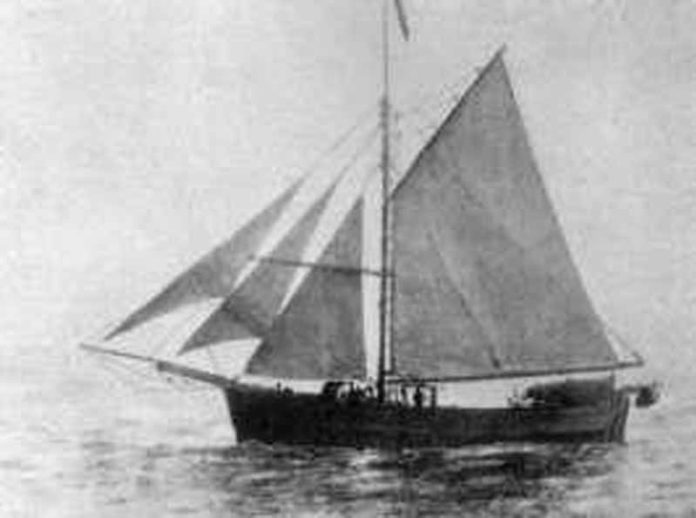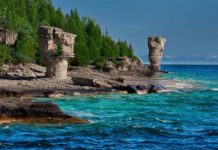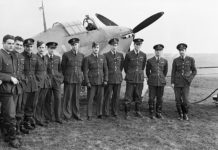Part of the mythology of Canada still, the search for the northwest passage began when European explorers sought shorter trade routes to Asia.
At the Vancouver Museum and Planetarium stands a small schooner called the St. Roch. Built in 1928 for the Royal Canadian Mounted Police, this sturdy vessel was the first to traverse the Northwest Passage from west to east. Nearly forty years years earlier, Norwegian explorer Roald Amundsen had made the journey in the opposite direction on board the Gjoa. The picture at the left is taken by “Islandmen” at the Die Gjøa am Fram Museum in Oslo.
Henry Larsen and St. Roch Undefeated by Two Winters Trapped in Ice
Commanded by Sergeant Henry Larsen, the St. Roch left Vancouver in June 1940 and finally reached Halifax in October of 1942, after spending two winters frozen in place. The ship returned to Vancouver in 1944. According to the Canadian Encyclopedia, the return journey took only 86 days. These voyages strengthened Canada’s claim to sovereignty in the north and the St. Roch became the first ship to travel the passage in both directions.
By No Means the First Ship to Try the Northwest Passage
Before the Gjoa and the St. Roch, many others had tried to navigate what they initially thought would be a quick and easy sea route to the orient. The Atlas of Canada states that Sebastian Cabot was the first to conceive the idea that the Northwest Passage might exist. The search began in the the 1500s, with interest on the part of Portuguese explorers.
Martin Frobisher took up the search on behalf of the British, making his first expedition in 1575. followed by two others in 1577 and 1578. When Frobisher found it impossible to raise money for further voyages, John Davis made two expeditions in 1586 and 1587, following a similar route to Frobisher. The two men gave their names to Frobisher Bay and Davis Strait. A war between England and Spain in 1588 temporarily halted the search.
In 1610, Henry Hudson began another expedition to seek a Northwest Passage. According to the website of Ian Chadwick, this expedition was financed by Sir Thomas Smythe, the governor of the Virginia Company and the East India Company, in an effort to recoup losses after his fleet was scattered and many of his men killed.
Though Hudson’s ship, the Discovery, sailed through Hudson Strait and around Hudson Bay, where the crew spent a winter, this expedition came to a disastrous end when the crew mutinied and set Hudson, his son and other crew members adrift in a small boat to perish.
Mythology of Franklin Expedition Disappearance the Subject of Search and Song
In Mysteries of Canada, Amanda Hall relates the mystery surrounding the fate of the expedition by British Explorer John Franklin in 1845. Franklin’s final resting place remained uncertain for over a century. Human remains found on King William Island suggested that the men had been poisoned by lead solder leaching into their tinned food. As reported by the BBC, In 1981, forensic anthropologist Owen Beattie confirmed high levels in the mens’ remains.
The Northwest Passage continues to be discussed. In 2000, Maritime archaeologist James Delgado participated in a re-enactment of the St. Roch’s voyage on the St. Roch II. His book, Across the Top of the World, (Douglas and McIntyre, 2009) describes the long history of the search for the passage.
From the late folksinger Stan Rogers, who composed a song called “Northwest Passage,” to the group Fraser Union, who sing the traditional 19th century ballad called “Lady Franklin’s Lament,” artists continue to be inspired by the mythology of the dangerous search for a way though the northern ice.






